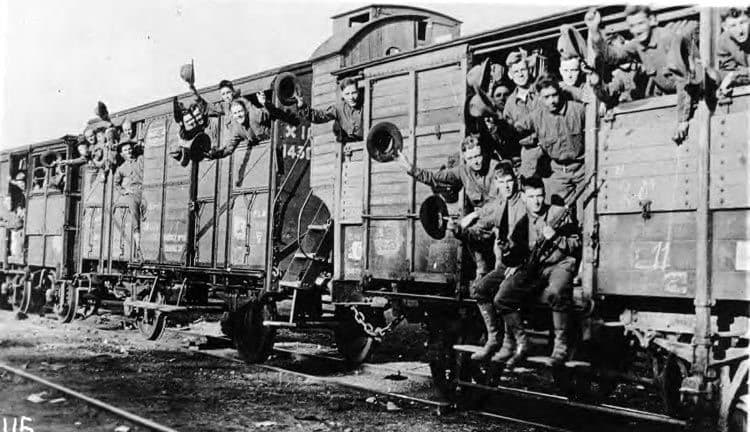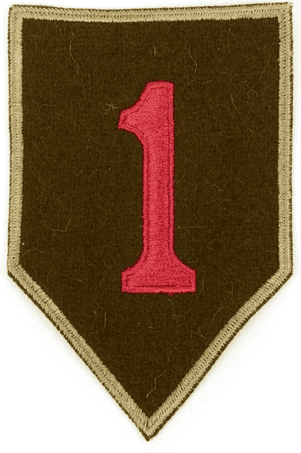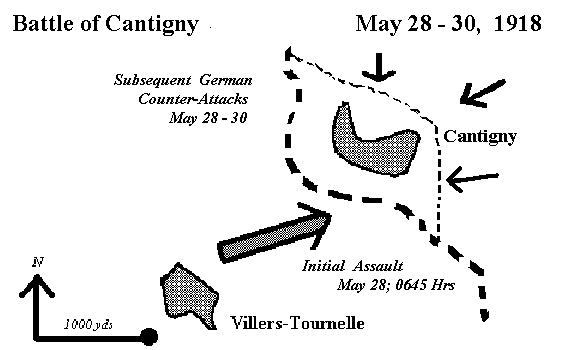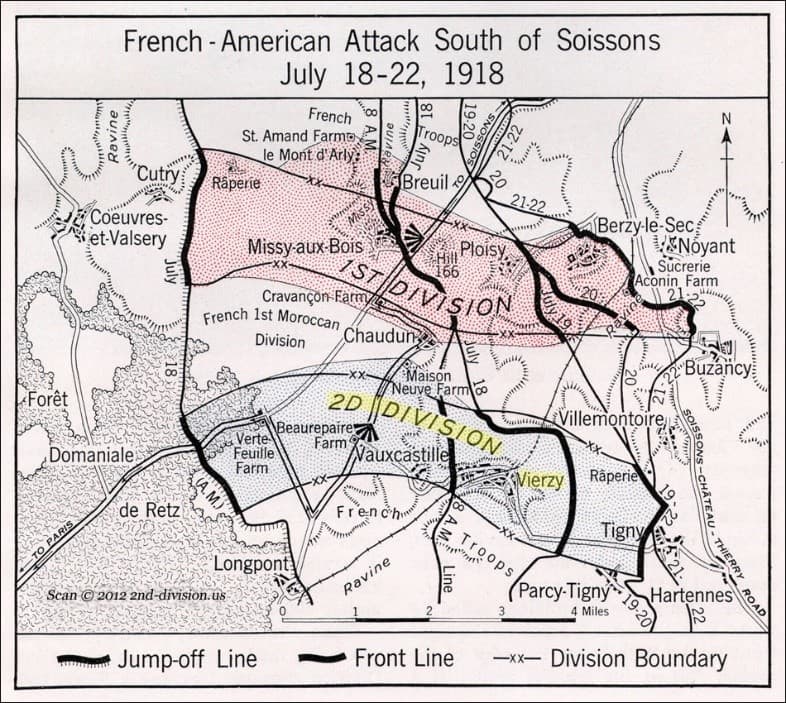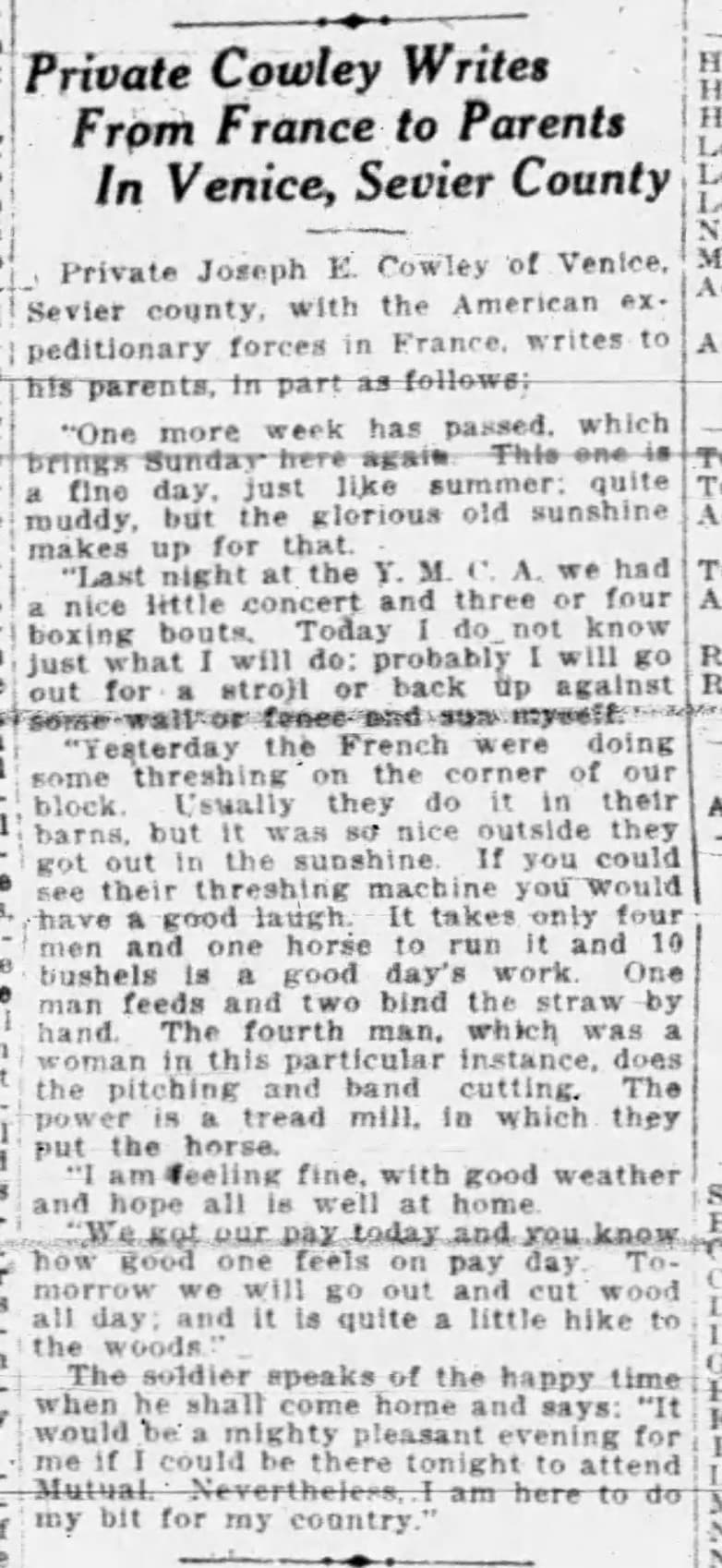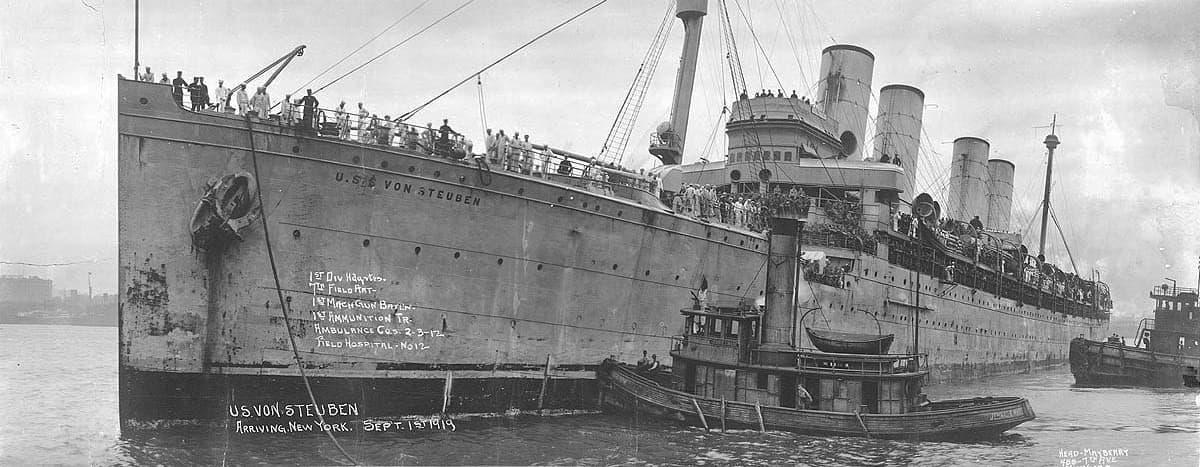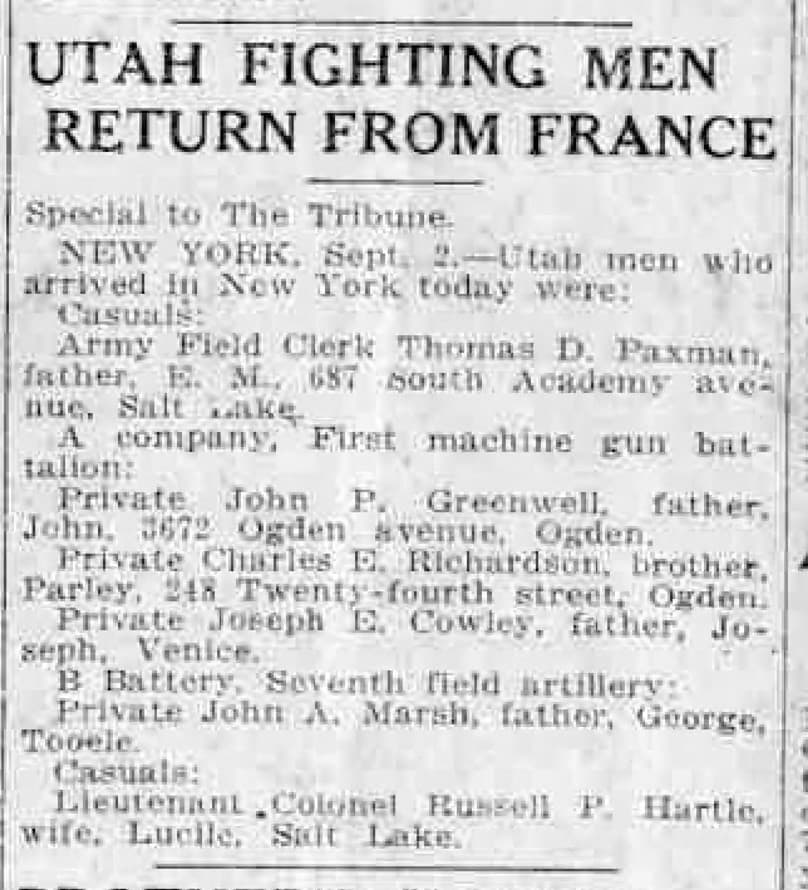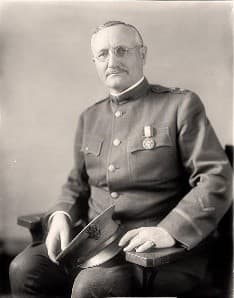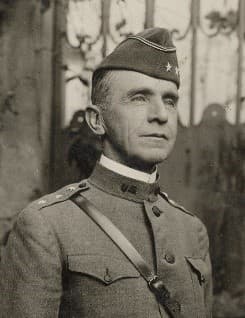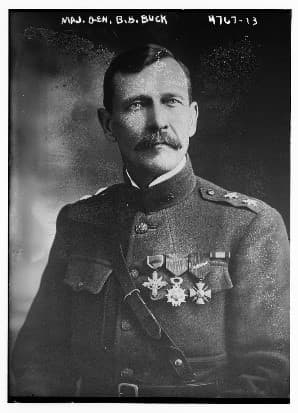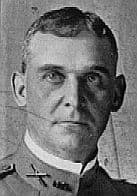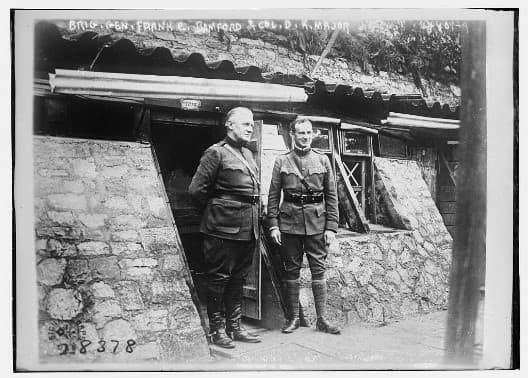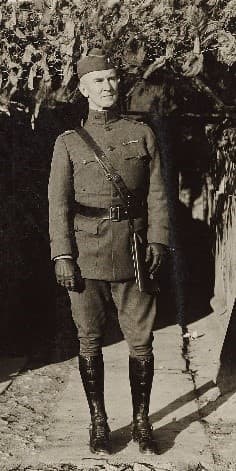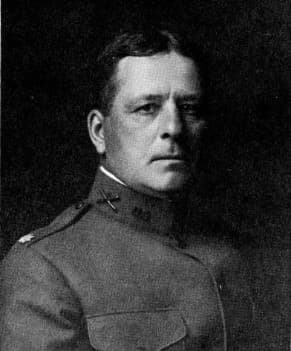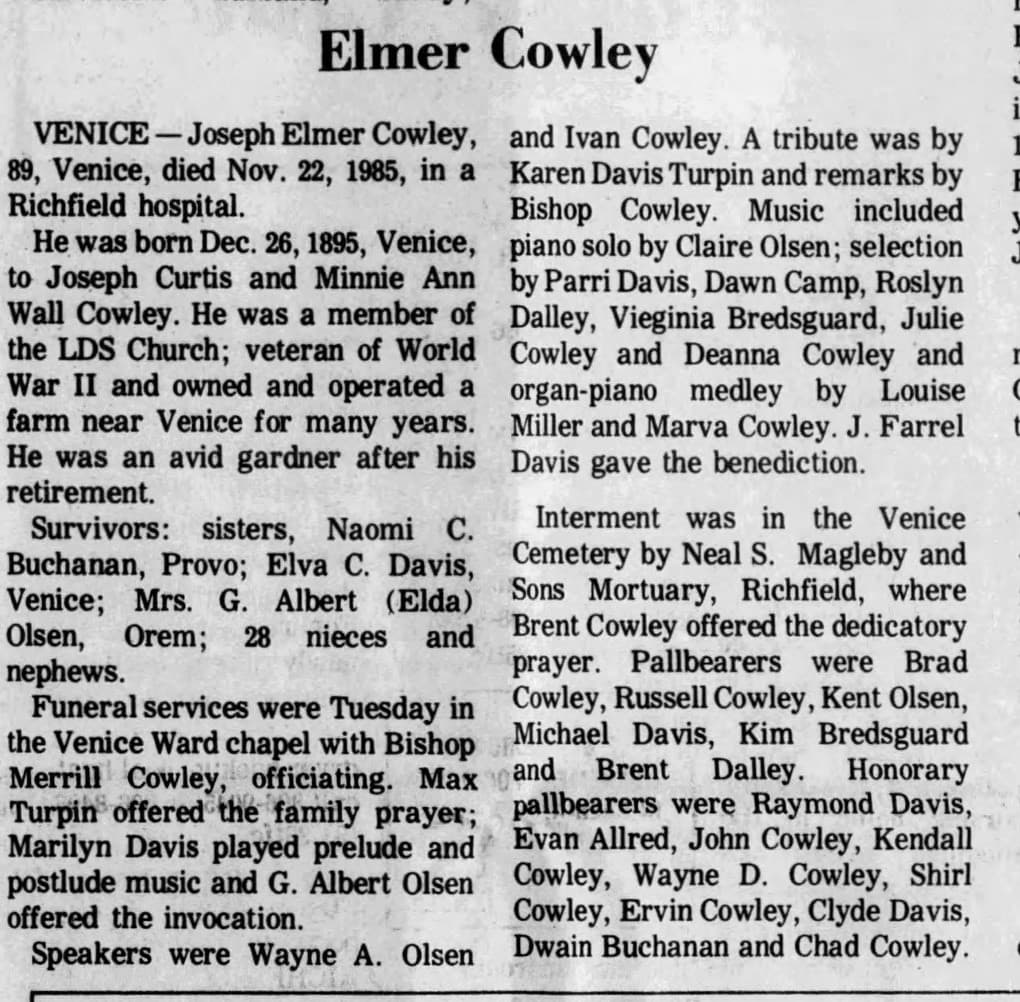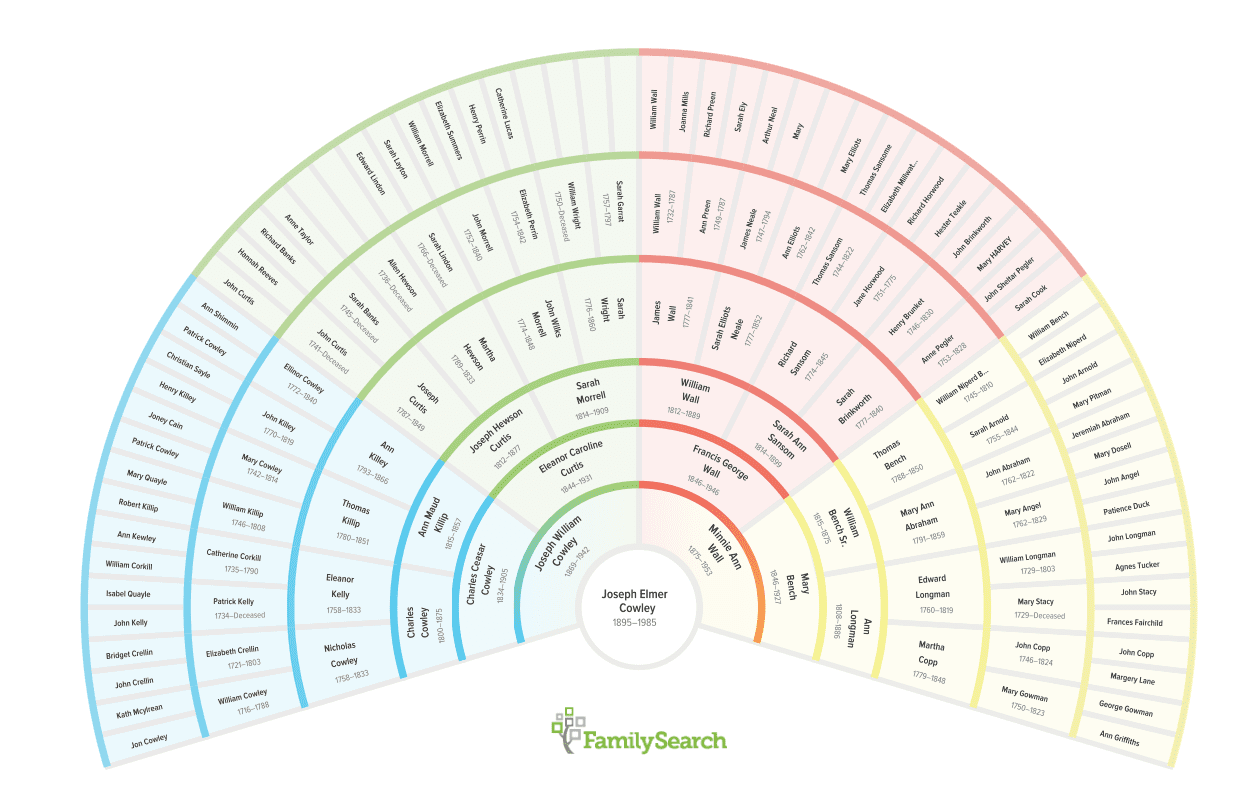Utah World War I Veteran – B Company 1st Machine Gun Battalion, 1st Division AEF (American Expeditionary Forces)
by Mark Singleton
This is a Joint publication with the Utah Opera and www.thewargenealogist.com. Information to create this post is from FamilySearch.org, Ancestry.com, Fold3.com, Newspapers.com and Historical Sites as noted in End Notes.
Joseph Elmer Cowley
B: 26 Dec 1895, Venice, Sevier, Utah
D: 22 Nov 1985, Venice, Sevier, Utah
FamilySearch ID: KWZ5-V33
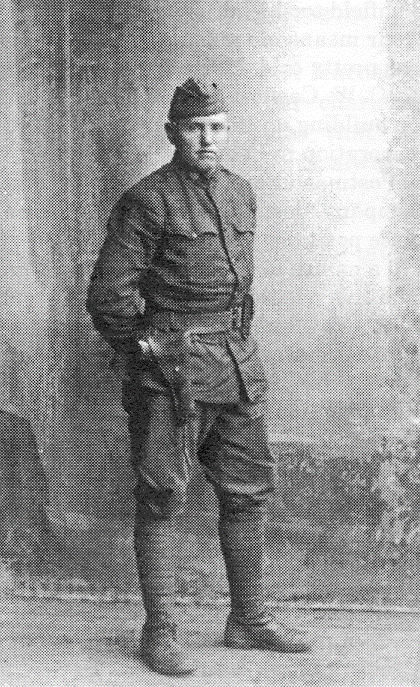
Figure 1 Joseph Cowley in Uniform
Early Years
Elmer, as he was called, started his life in a small, dirt floor, log cabin, his parents Joseph and Minnie Ann Wall, came from Pioneer stock. Born in the town of Venice Utah (formerly named Wallsville) the day after Christmas 1895.
Elmer was the 3rd child of 11. His older brother Elmo born just 1 year and 5 days before him, had passed away a short 22 days after he was born.
There in Venice, Elmer attended Primary school (now closed) and then continued to attend High School in Richfield Utah.
When Elmer was just 11 years old his father would be called as a missionary for The Church of Jesus Christ of Latter-Day Saints to the Northwest United States Mission Field. Where he would serve for 2 years, while his mother worked to provide for the family of 8 children. Elmer started to work to help the family, he worked 10 acers of land, raised chickens and sold eggs.
At the age of 15 (abt. 1911), Elmer bought some land to farm in Venice. After he graduated from high school he attended college at both Snow Academy (now Snow College) in Ephraim Utah, and then transferred to Utah State College (now Utah State University) in Logan Utah.
War Years
The following was written by Joseph, photos added, items in Italics added for clarifications, spelling of City Names changed when needed[i]
In 1917, I was drafted and left Richfield November 27, 1917, for Fort Lewis, Washington. While here we got our shots and vaccinations in six days and we left by slow train for New York. We were in Long Island for one moth getting expensive training to be soldiers. I was issued an Enfield rifle and six shells, but I did not even know how to load it. We left for overseas and was not even issued a uniform. We left by boat (USS Leviathan). It had ten thousand soldiers and one thousand nurses besides the crew. It took us three days to cross to South Hampton, England. On Christmas day, we had 1 loaf of bread and a turkey for 8 men. Those who could eat the fastest got the most.
[i] Story is from Posted on FamilySearch, https://www.familysearch.org/photos/artifacts/50581324?cid=mem_copy
Figure 2 USS Leviathan in dazzle camouflage
On ship you volunteered for KP and the job was to slice bread for 1000 every day. One meal a day. Guys would come and say, “Joe won’t you cut mine a little thicker”.
Figure 3 Army Troops in Le Havre, France
When I went into the army I was issued an army rifle Springfield and six shells, and I did not even know how to load the rifle. When we landed at Southampton, England and they let us fire the shells and then took the rifle away from us, then they issued us Colt 45 sidearm and French Machine guns. I was in B Company 1st Machine Gun Battalion, 1st Division AEF (American Expeditionary Forces). We rode around in little Fords and so therefore we were called Pershing’s Pets, because most of the others were foot soldiers. The reason for the motorized unit was so that we could be used anywhere we were needed and we were not assigned just to one unit.
New Year’s Eve, we went from England to Le Havre, France, in a boat that would hold 8 horses or 40 men. I was on guard up the stairway. It was rough. I called for relief, went up on deck and stood by the rail and was so sick. When we reached Le Havre, we dropped anchor and it sounded like the bottom had gone out of the boat or the Germans had got us.
On New Year’s Day, January 1, 1918, we loaded into box cars after a meal. We traveled clear across France to an old prisoner camp. We had flour, but no shortening, and plenty of potatoes.
More information on Le Havre during World War 1 can be found here.
I was sent over as a replacement outfit. We rode around France for several days and almost into Italy and the food was not too good as they about starved us for ten days. They gave us flour and potatoes but not anything to make bread out of.
We were shipped to the gunnery training course and we lived here through the winter for three or four months, this is where we took our training as machine gunners. This is where we gave up our rifles. We used fruit trees for targets while training and did much damage to the trees by cutting them to pieces with the bullets that we fired. The Captain called us out and said the French people were complaining for the damage that we had done to the trees.
Figure 4 First Division Shoulder Patch, era 1919
We were moved to the front lines in the Tulle area in 1918 and while there they took us out to No Man’s Land in the trenches and you could not see over the tops. Travelling around in the trenches I stepped into a hole of water in the trench all the way up to my waist, stepping off the duck board. This was our first taste of real battle as we fired shots but the Germans were shooting artillery over us but we did not know which way the shells were going. The First Division to which we were assigned held off six counter attacks by the Germans and was the turning point of the War and Cantigny {see information below}.
I served on KP and while on this little task they put a shell into the ammunition dump and supplies. We threw the loaves of French bread made into huge round rings and they were stamped 1914 and we were using them in the year of 1918. We loaded trucks to save the supply by throwing them from one to another to get the trucks loaded. I was put on guard at the outpost and told to stay there and not give an inch regardless, there was telephone communications that I had to watch to make sure that no one could set in on this line.
We moved from Camp Cantigny back to a rest camp for a week then the division was sent into Soissons {see information below}. We combated the Germans in this area for 10 days then we went into the Argonne Forest Sector. We then moved all the way back across France {to} St. Mihiel {see information below}. We camped in a forest in the thick woods for a few days and we picked the wild blackberries and coaxed the mess sergeant out of a little sugar for them. We were held here until zero hour for another planned attack and when it got close to zero hour we were all shaking like leaves but as soon as we got started on the attack all this fear left up.
The Germans were taken by surprise on this attack on their headquarters and they were not at all happy with this as we took over their headquarters which was huge underground cement rooms that many of the fellows went down to look around, but I did not go down. The French and British wanted to mix up the American Fellows with their forces but General Pershing said not that he would have an American Army or nothing.
After the capture of this force we were headed towards Germany after the armistice was signed we headed through Luxembourg and they unload many supplies and we were placed on guard of these supplies for about a week. While we were here we got out among the people and found out that they made very good sweet cider, but it was hard to get it from them.
They were not supposed to let us have any but we persuaded them to let us buy some of it. The fellows laughed at me because I would drink the cider but not what they liked in the stronger spirits.
From here on we went on in to Coblenz and it took quite a while before they could get us across the Rhine River on the pontoon bridges because they had so much equipment that they wanted to get across before us. We were billeted in the German homes right with the German people. We did not eat with them because we had our own kitchens and supplies. Here we did much drilling and training and things became nervous and everyone was put on alert because they figured that the Germans would begin fighting again. After this we were put on guard duty with two men to the post every other day guarding the regular army supplies so that nothing unusual could take place, and no uprising could get started.
The German people were put under Martial Law and they did not have very much freedom and could only do what they were allowed to do without interfering with the functions of the army.
During occupation they would have us set up in one village for a short time then they would have us move on to another village. We had more respect for the Germans than we did the French people and they were much more clean and industrious than the French.
After they moved in new divisions we were sent back to staging areas in preparation for going home. We were shipped back across France and Belgium in the 40 and 8 boxcars (40 men and 8 horses). We were sent through the sanitation area to be deloused. After the delousing was compete they loaded us on ships and started us on the homeward journey.
The minute we could see land or U.S. soil, everyone was on the top deck so that everyone could see the Statue of Liberty as we were coming into the harbor. The discipline was somewhat relaxed, and everyone was on deck and we stayed there until we were towed into the harbor by the tugboats. After landing we were paraded down Fifth Avenue to be viewed by those who were there to welcome us. We had new vehicles to ride in, but the infantry walked.
Battle of Cantigny[i]
In order to raise the prestige of the AEF and to prove its effectiveness to the world, Pershing decided to attack the small town of Cantigny with the closest unit available. By May 20, 1918, the 1st infantry division had been at the trenches opposing the town for a month. On May 28th, the division opened the U.S. offense combined with support of its artillery detachments at 0545 and French allies close to the town. The American forces were able to take the town by 0700 hours, taking 100 German prisoners and only suffering 50 casualties. However, only a short time later, the Germany artillery began to attack the town combined with infantry from hidden dugouts. The battle continued on for most of the day, and at 1640 the Germans artillery launched a major bombardment, followed up by an infantry counterattack. During this counter attack, Major Teddy Roosevelt Jr., led the 26th infantry to counter further counterattacks. By the 29th, the battle was over at a cost of 1,400 casualties to the Americans. More importantly, it showed that the Americans in Europe could fight and achieve results.
[i] https://ss.sites.mtu.edu/mhugl/2016/10/16/1st-infantry-division-in-the-first-world-war/
Figure 5 Battle of Cantigny Map
Battle of Soissons[i]
The Battle of Soissons was the name of the counterattack of the Allied forces during the Second Battle of the Marne, the last major offense that the Germany army attempted during the conflict. From July 15 to the 17th, the German army attacked the allied forces to try to get across the Marne River and push towards Paris. Thanks to American army efforts, the German right wing failed to take any land across the Marne. In order to attack and force the German retreat, the allies planned on attacking the entire Marne salient. The Allied forces then selected the 1st American, 2nd American and 1st Moroccan (French) divisions to break the sensitive part of the German lines located south of Sossions. At 0435 on July 18, the attack began and by the end of the offensive on July 21, the 1st division was able to advance 11 kilometers into the salient. Furthermore, the 1st was able to capture 3,500 prisoners and 68 field guns. The 1st Division during this attack lost 7,000 men with an estimated loss of 60 percent of its officer corps.
[i] https://ss.sites.mtu.edu/mhugl/2016/10/16/1st-infantry-division-in-the-first-world-war/
Figure 6 Battle of Soissons Map
The Battle of St. Mihiel[i]
The Battle of the St. Mihiel salient took place from September 11-13 1918 and is the first battle of the war that the United States Army took its first offensive. The attack began on September 12 at 0500 hours with a limited 4 hour bombardment of the German trenches. During the American advancement, the American forces were successful at moving up and were able to capture the salient’s southern boundary. By 0600 the next day, the American forces were able to the capture the town of Vigneulles. After pushing back the German counter attack later that day, the Germans retreated from the area [10]. For some such as Corporal Carl C. Kenney of 1st Motor Supply Train, Co. F, the experience of battle was somewhat different from the other infantry men. In his diary, he explains his role throughout the battle.
September 11, 1918. Got up at 6am. Hauled rations. Raining hard today. September 12. We started another drive on the St. Mihiel front. September 13. Bosh are retreating fast, hauled wounded all night.
To say the least, the Corporal had a different view of the battle compared to the regular infantry man.
[i] https://ss.sites.mtu.edu/mhugl/2016/10/16/1st-infantry-division-in-the-first-world-war/
Map of the Battle of St. Mihiel
Letters Home
To every Dough Boy letters were a key factor to morale, as mail caught up to him, it gave him a break from the battles of war, and escape to a time back home. The letters he would write would never really talk about the horrors of war, but was a time to easy his mothers or wife’s heart that he was OK, and was looking forward to being home.
Letter to parents published in Deseret News, 15 April 1918[i]
[i] https://www.newspapers.com/clip/40741192/joseph_elmer_cowley26_december_1895/
The Trip Home
Joseph sailed from Brest France to New York leaving on 24 Aug 1919 aboard the USS Von Steuben, landing on 1 Sep 1919 in Hoboken, New Jersey.
Figure 8 Von Steuben arriving at New York on 1 September 1919, bringing home from France soldiers of the First Division Headquarters
His homecoming was published in the SLC Tribune 3 Sept 1919[i]
[i] https://www.newspapers.com/clip/40741892/joseph_elmer_cowley26_december_1895/
Commanders of the 1st Division[i]
- 1917
- June 8 Brig Gen William L. Sibert {FamilySearch ID: L7LV-81X}
[i] https://history.army.mil/books/wwi/ob/1-cdr-OB.htm
Figure 9 General Sibert
-
- June 27 Maj Gen William L. Sibert (Promoted, see Above)
- Dec 14 Maj Gen Robert L. Bullard {FamilySearch ID: GM6S-D97}
Figure 10 Major General Bullard
- 1918
- Apr 5 Brig Gen Beaumont B. Buck (ad interim) {FamilySearch ID: LZFH-V4W}
Figure 11 General Buck
-
- Apr 13 Maj Gen Robert L. Bullard (returned, see above)
- July 15 Maj Gen Charles P. Summerall (FamilySearch ID: MB83-4GQ)
Figure 12 Maj Gen Charles P. Summerall
-
- Oct 12 Brig Gen Frank E. Bamford (ad interim) {FamilySearch ID: LBR5-PG1}
Figure 13 Frank Ellis Bamford (1865-1932) and Duncan Kennedy Major, Jr. (1876-1947) in 1918
-
- Oct 18 Brig Gen Frank Parker {FamilySearch ID: L293-LJJ}
Figure 14 General Parker
-
- Nov 21 Maj Gen Edward F. McGlachlin, Jr. {FamilySearch ID: KCML-PCQ}
Figure 15 General McGlachlin
Later Years
Elmer returned from the war and would never marry. He farmed, worked the land, served his community, and help with his parents.
Elmer passed away in the Richfield Hospital on 22 November 1985.
Obituary Published “The Richfield Reaper” on 27 Nov 1985[i]
[i] https://www.newspapers.com/clip/40742582/joseph_elmer_cowley26_december_1895/
Elmer’s Genealogy[i]
[i] From FamilySearch on 19 Dec 2019




